Disclosure: I was given a complimentary paella cooking class in Valencia in exchange for this review but as always, all opinions are my own.
“Paella, paella, sal buena, sal buena.” we repeated, pointing to our nearly complete paella.
No, we weren’t performing some sort of strange spell. This was the final step in creating the perfect paella, according to Chef Beni at the Escuela de Arroces y Paella Valenciana (The School of Valencian Rice Dishes and Paella) in Valencia, Spain. But let’s rewind to the beginning of the class.
Since I was spending my summer in Valencia, I was fortunate enough to have sampled my fair share of rice dishes, though none of them were the traditional paella Valenciana. I was nearing the end of my stay in the city and knew that I had to sample the best one I could find. But why simply eat the best one when I could learn to make it myself? I’d attempted to cook paella a couple of times in Los Angeles and failed miserably, so I was eager to learn the secrets from the masters themselves. Besides, taking a cooking class really makes me appreciate the time and effort that goes into dishes.
Enter the Escuela de Arroces y Paella Valenciana. This school has a reputation as one of the best paella places in Valencia, both to learn and eat the traditional dish. My friend Josie happened to be in town visiting, so the both of us opted to don our chef hats and aprons (literally) and get to cooking.
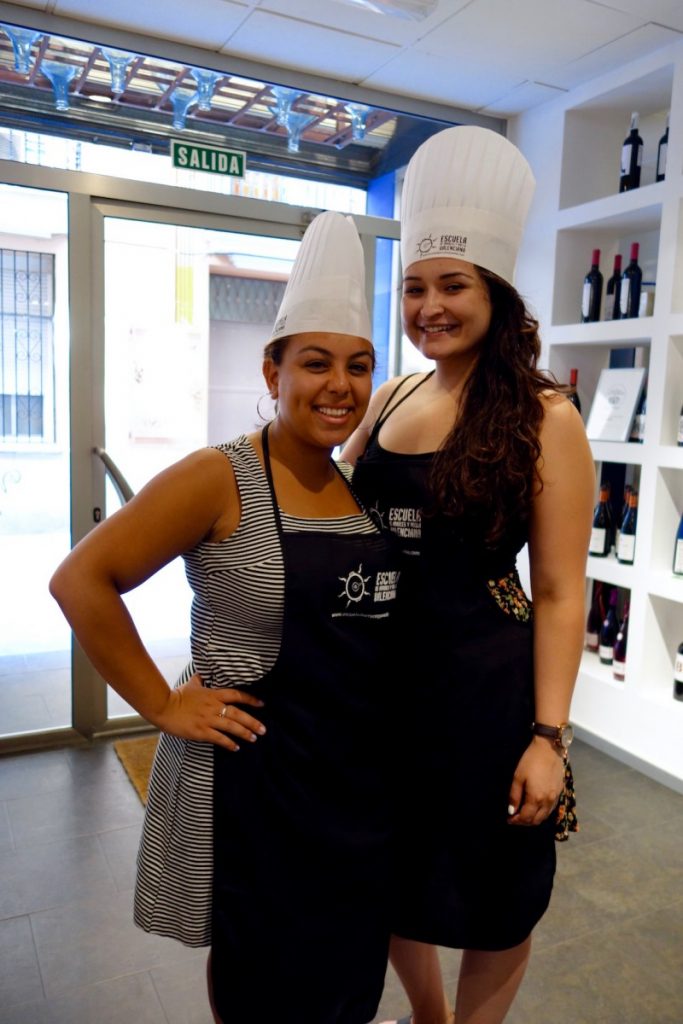
Before we headed to the kitchen, we had to source the ingredients. What better place to get them than the Mercado Central de Valencia?
Our first stop was to pick up the main ingredients: chicken and rabbit. The Mercado’s ingredients are always fresh – a crucial component of a perfect paella.

Next, we purchased the veggies. Paella Valenciana traditionally uses perona (a broad string bean), garrafó (lima bean), roget (couldn’t find the translation) and tomatoes, although this changes seasonally. Tomatoes are always a necessity and the Valencian ones put American tomatoes to shame!
What else goes into paella? Why, only the best quality saffron and paprika out there. Many tourist shops in Valencia will sell a paella spice mixture, but that’s mostly food coloring. Buy the good quality ingredients! Coincidentally, we bought saffron from the same booth that I’d visited on my food tour the month prior, so I knew it was the good stuff. We picked up our last ingredient – rosemary – then headed back to the school, eager to get started.
Once we donned our dorky cute hats and aprons, we headed inside. There were five of us in total, and we listened carefully as Chef Beni explained the history of paella, as well as some of the rules for cooking a good one.
Paella is actually named after the pan it’s cooked in. The paella pan is large and flat and completely balanced. This is crucial since ingredients are cooked one at a time in the center of the pan then moved to the edges. The dish itself originated in Albufera, a small farm town about 30 minutes from Valencia. Traditionally, paella is cooked on an outdoor stove, but most restaurants use a gas burner due to safety regulations.
The paella making process is long and extensive – it took us newbies around 2 hours from start to finish. The ingredients that take the longest to cook are cooked first in the middle of the pan, before being moved to the edges as they near completion. This meant that we started with the chicken while prepping the veggies, then added the rabbit to the mix.
Prepping veggies included removing the lima beans from their pods, tearing the green and roget beans into bite-sized pieces, and grating the tomatoes into a purée. I loved that we were only using fresh ingredients!
Once the proteins were cooked, we moved them to the edges of the pan, where they’re exposed to less heat. We then repeated the cooking process with the beans. It’s worth noting that the stove top we were using had two separate controls within the same burner – an interior one and an exterior one. It’s all in the details!
Next, we added in the tomato purée and were instructed to cook it until it smelled smoky. Josie and I couldn’t actually figure out when it was done, but luckily Chef Beni came to the rescue.
Our next step was to mix everything together in the center and top it with some paprika and a LOT of water. Considering paella is a dry rice dish, I was astounded by how much water we were adding to the pan.
While the paella was bubbling, Beni taught us a trick to ground the saffron using a piece of paper and a spoon. Although saffron looks red when you buy it, it turns yellow once it’s ground, which is how paella gets its yellow color. After adding in the saffron, a healthy dose of salt, and a piece of rosemary, we were told to abandon the paella for a bit to enjoy some snacks and drinks in the dining room. We were treated to some delicious clochinas (Valencian mussels) and Spanish tortilla.
Half an hour later, we were called back to our chef duties. It was now time to add the rice in! We parted the waters created a gap down the middle of the pan and added the rice in a thin line before mixing all the ingredients together. Basically, I realized that making a good paella is about 90% technique. Who would have guessed?
There was one final ingredient we added to the paella: caracoles, aka snails. If you’ve never had snails before, all you need to know is that they taste like whatever they’re seasoned with. These were pretty small and were for posterity more than flavor.
Remember when I told you there are rules to a perfect paella? Well, the main one is this: it must contain a socarrat, the toasted crispy rice found at the bottom of the pan. Without it, your paella gets an F #harshtruth. To achieve this, you turn the burner all the way up for about a minute or so and you say a chant: “paella, paella, sal buena, sal buena.” Translation: Paella, paella, come out good, come out good. Note: the chant must be done with enthusiasm.
Lastly comes the final countdown and voila! PAELLA.
After ALL of that, you have to wait for your paella to cool down so you can actually eat it, which brings me to the rules of cooking and eating paella:
The Rules of Eating Paella
- Paella is served warm, not hot.
- It should be eaten directly from the pan, not served on a plate.
- It is to be consumed during lunchtime ONLY. In Spain, lunch is the heaviest meal and dinner is for tapas and light food.
- It must be made for a minimum of two people. You won’t find a restaurant serving paella for one because who wants to put in ALL that effort for one person?
- It should not be fluorescent yellow. If it is, the cook used food coloring.
- It must contain a socarrat, the toasted crispy rice found at the bottom of the pan.
Although paella is Valencian, you can likely find a good one in other cities in Spain, especially Madrid and Barcelona. However, if your paella is breaking any of the rules, you’re likely eating a touristy version. Individually portioned paella might have been made the same morning if you’re lucky, but to be on the safe side, bring a friend and order a fresh one.
By the way, our paella ended up being delicious! It was served with salad and wine, and we even received certificates at the end of the class. No two paellas are ever the same, but Beni concluded that paella is like sex – the more you practice, the better you get at it LOL.
Overall, I had an amazing experience at La Escuela de Arroces y Paella Valenciana. It was light-hearted, fun, and informational – everything a good cooking class should be. As someone who has failed at paella-making several times, I can honestly say this class is a must-do activity in Valencia. A good paella is as much technique as it is good ingredients, and if you’re looking for an entertaining and educational class, then La Escuela de Arroces y Paella Valenciana is where it’s at!
Book your spot here!
Escuela de Arroces y Paella Valenciana
Carrer dels Juristes, 12
46001 Valencia
Valencia, Spain
info@escueladearrocesypaellas.com
More Spain Resources
Planning a trip to Spain soon? Check out ALL my posts on Spain below:- Spain Travel Guide
- The Budget Guide to Barcelona
- The Ultimate Valencia Travel Guide: 20+ Awesome Things to Do in Valencia, Spain
- The Foodie Guide to the Best Restaurants in Valencia Spain
- The Best Paella Cooking Class in Valencia Spain: Escuela de Arroces
- Valencia Food Tour: Treats and Tastes with Valencia Urban Adventures
- Exploring Street Art in Valencia, Spain
- Budget Guide to Madrid
- The Solo Traveler Guide to Andalusia, Spain
- Tapas and Taverns with Madrid Food Tours
- A Weekend Guide to Bilbao
- The Art of Finding and Ordering the Best Pintxos in San Sebastian
- 24 Hours in Valencia: A Tale of Enchantment
- Why I’m Spending Summer in Valencia, Spain
- Sleeping and Socializing: Cats Hostel Madrid Lavapiés Review
- EatWith Review: Dining with Locals and Spain in Beyond
Tell me: have you ever taken a cooking class abroad? What’s the best dish you learned to make? Share in the comments below!
Like this post? Pin it for later!


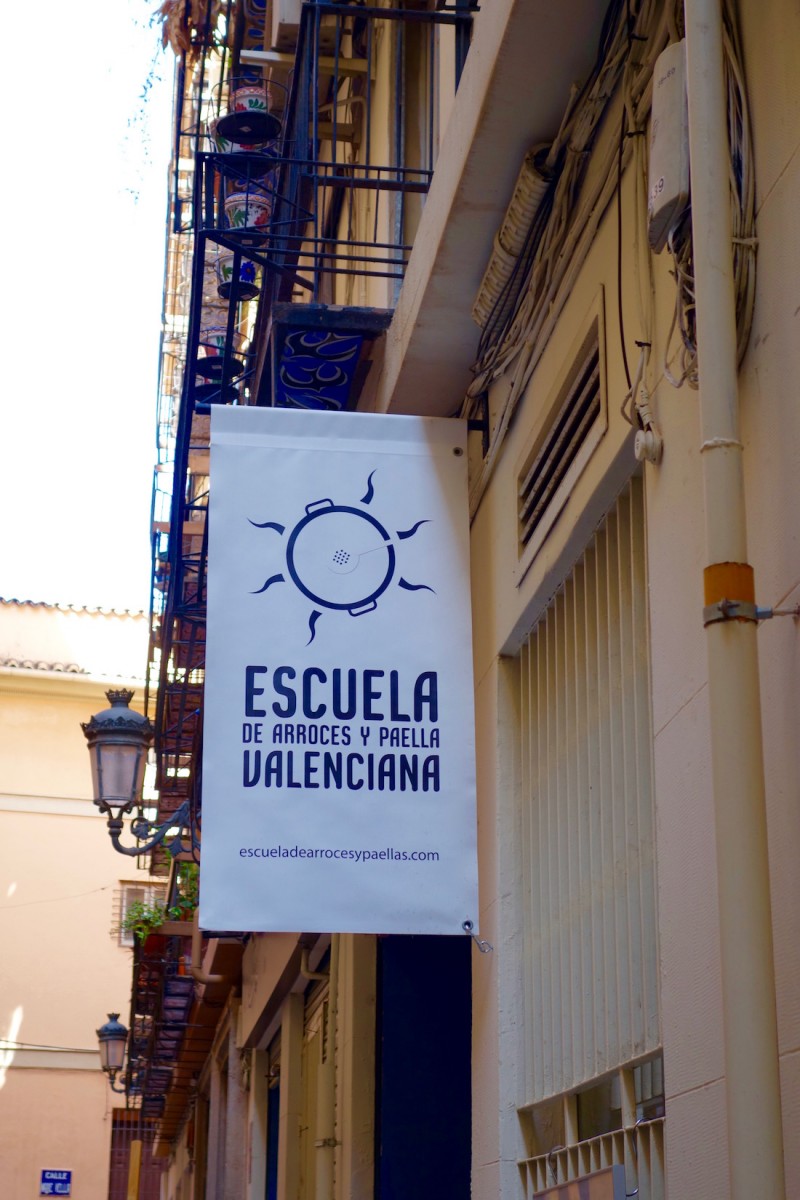

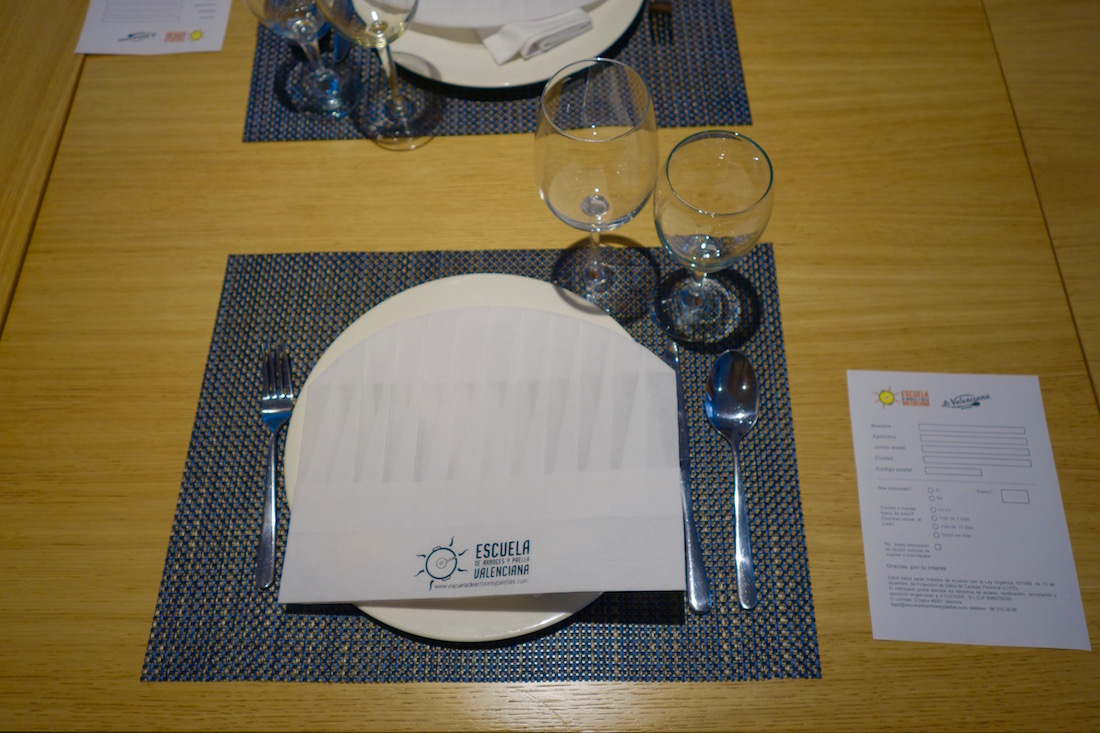
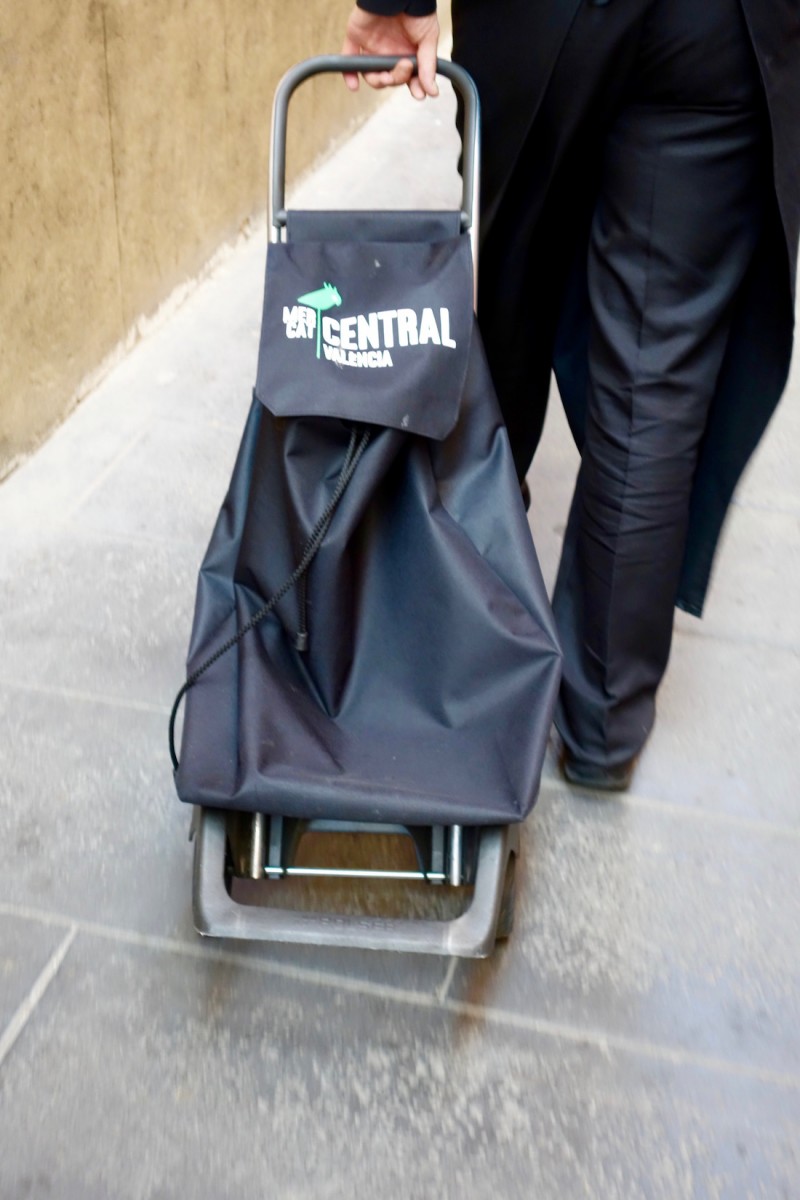
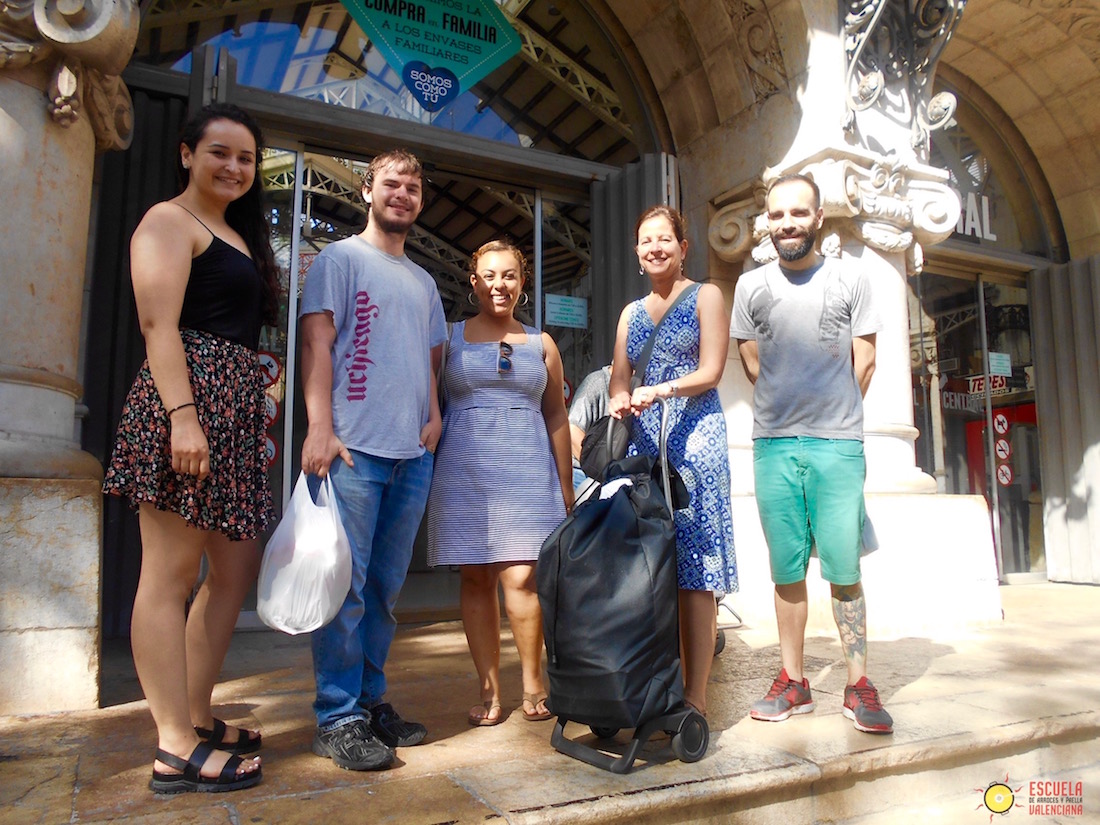
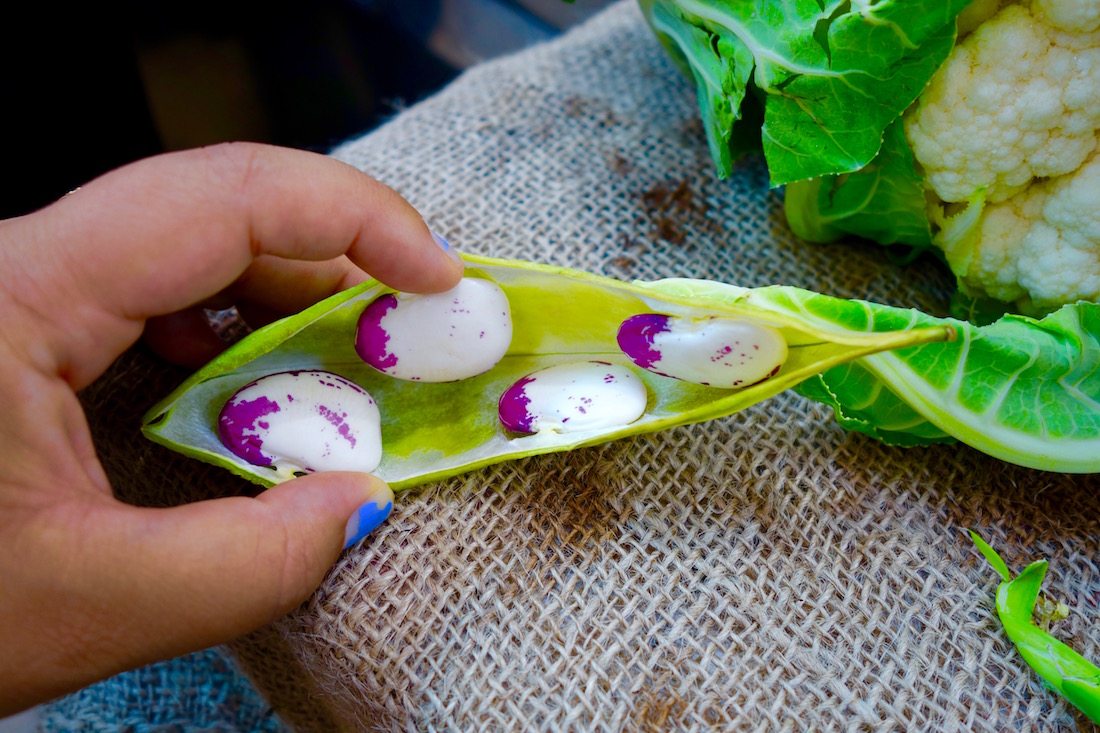

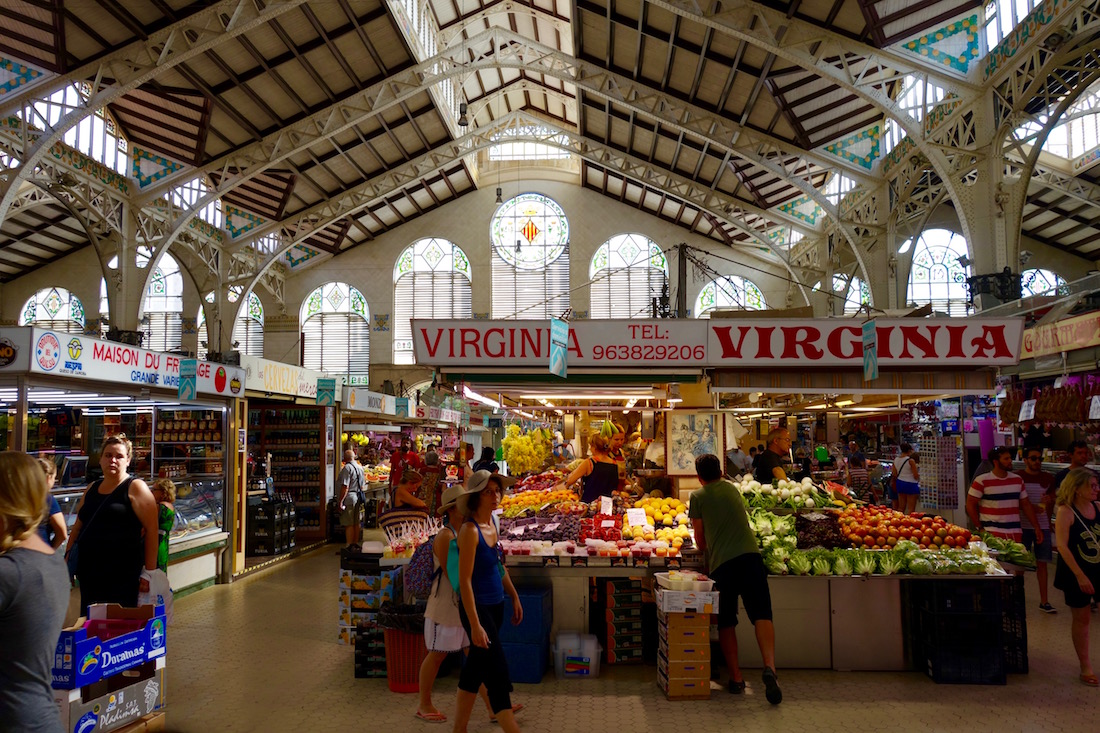
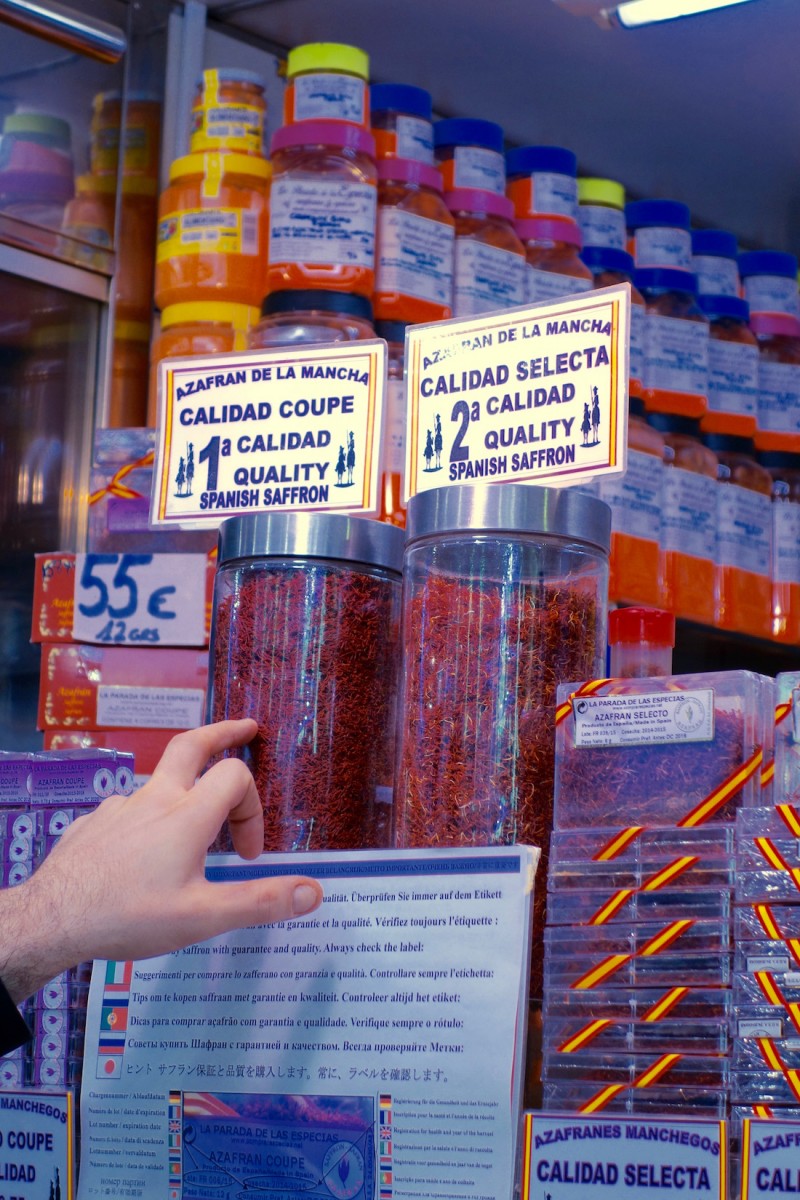

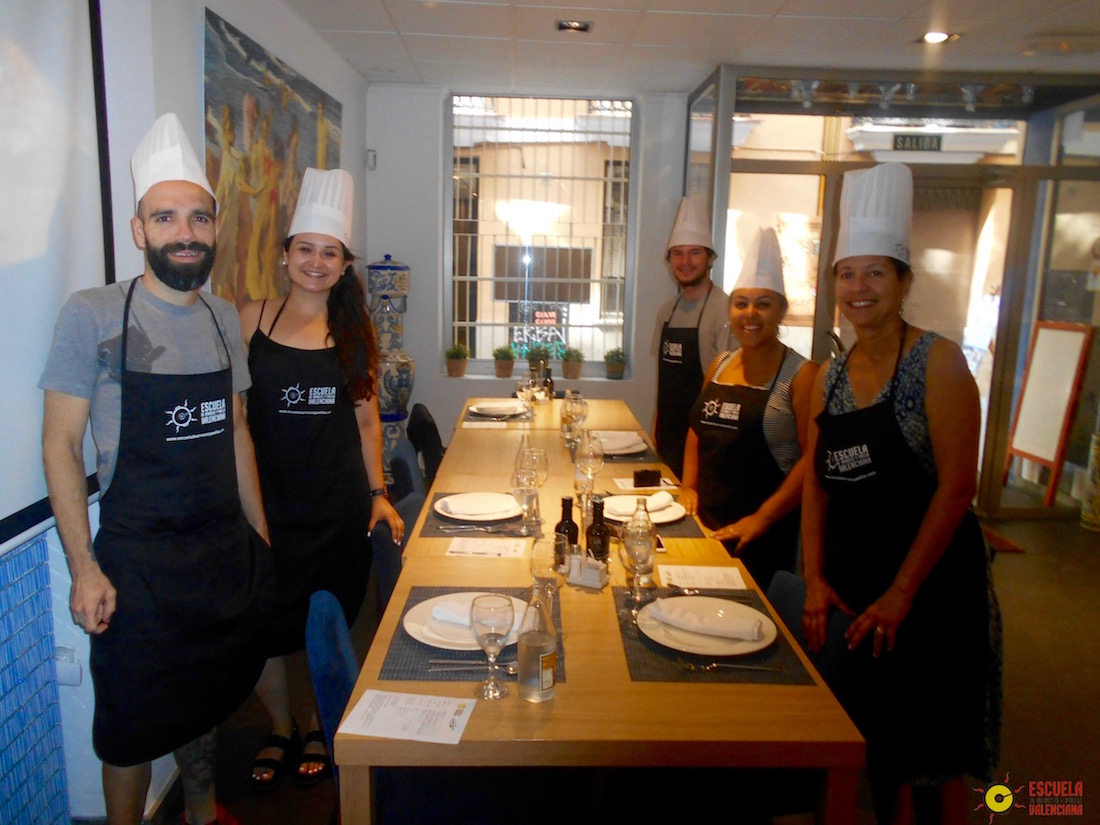

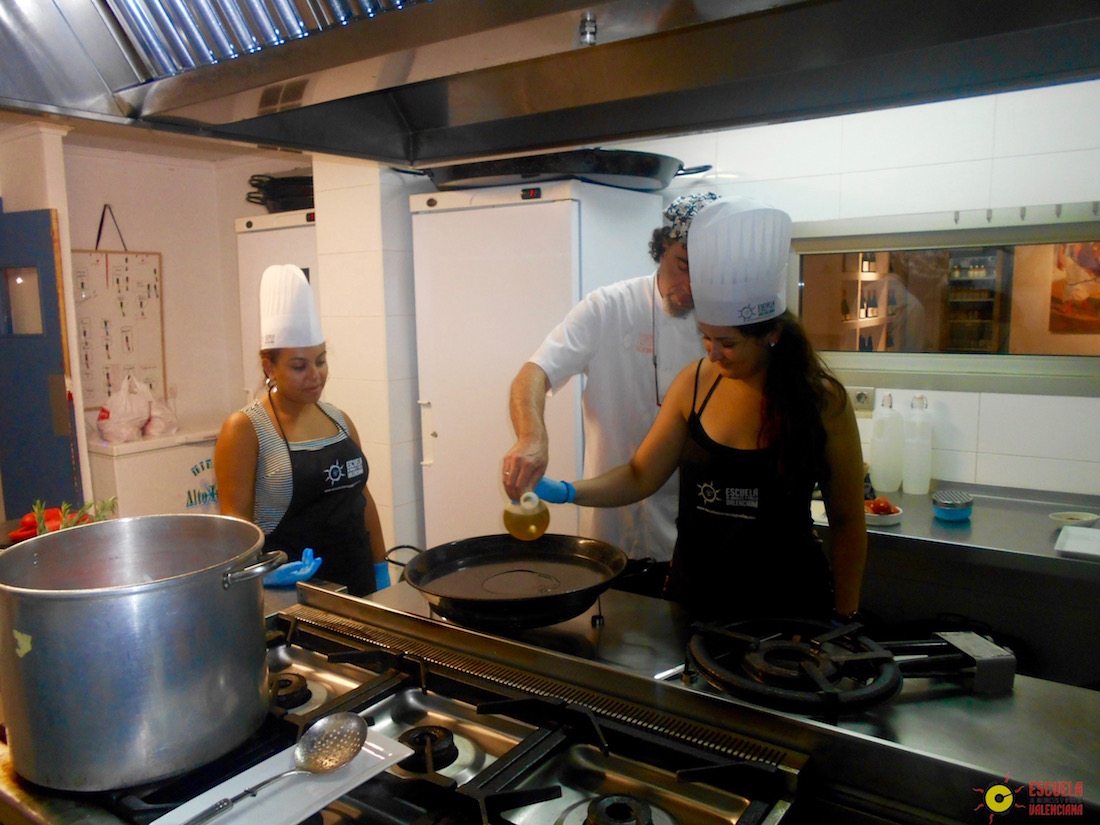

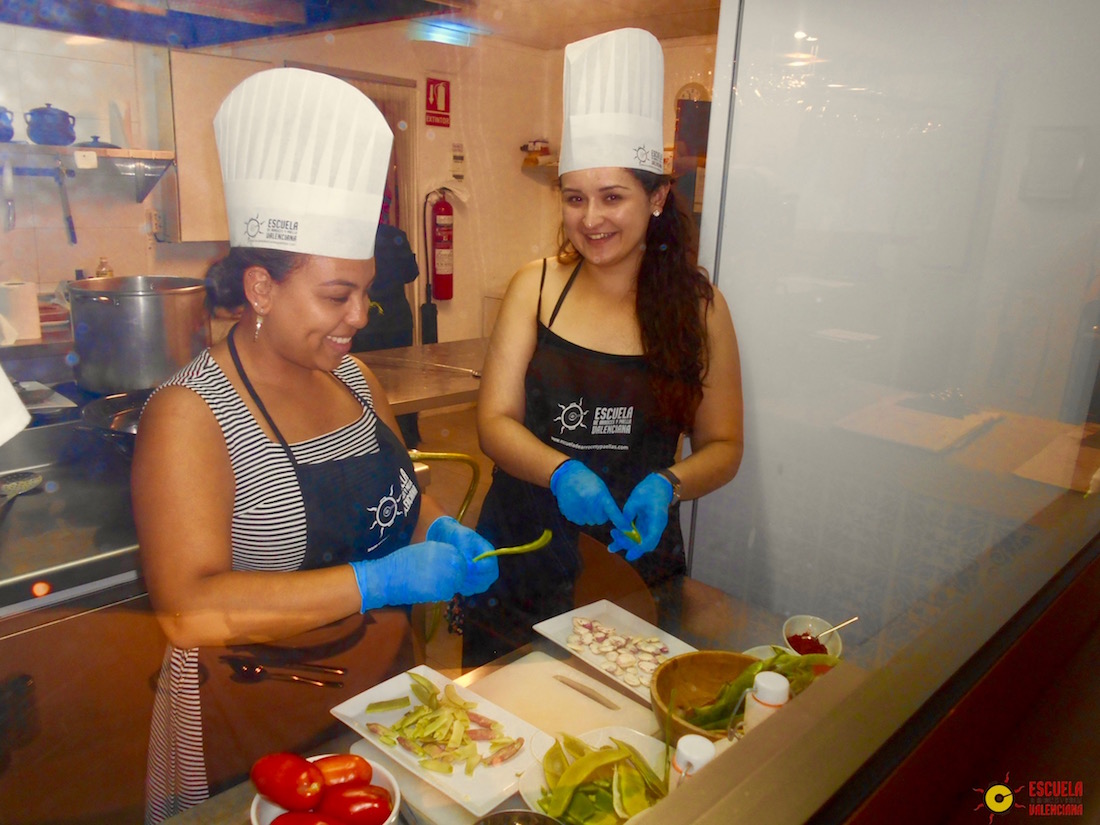



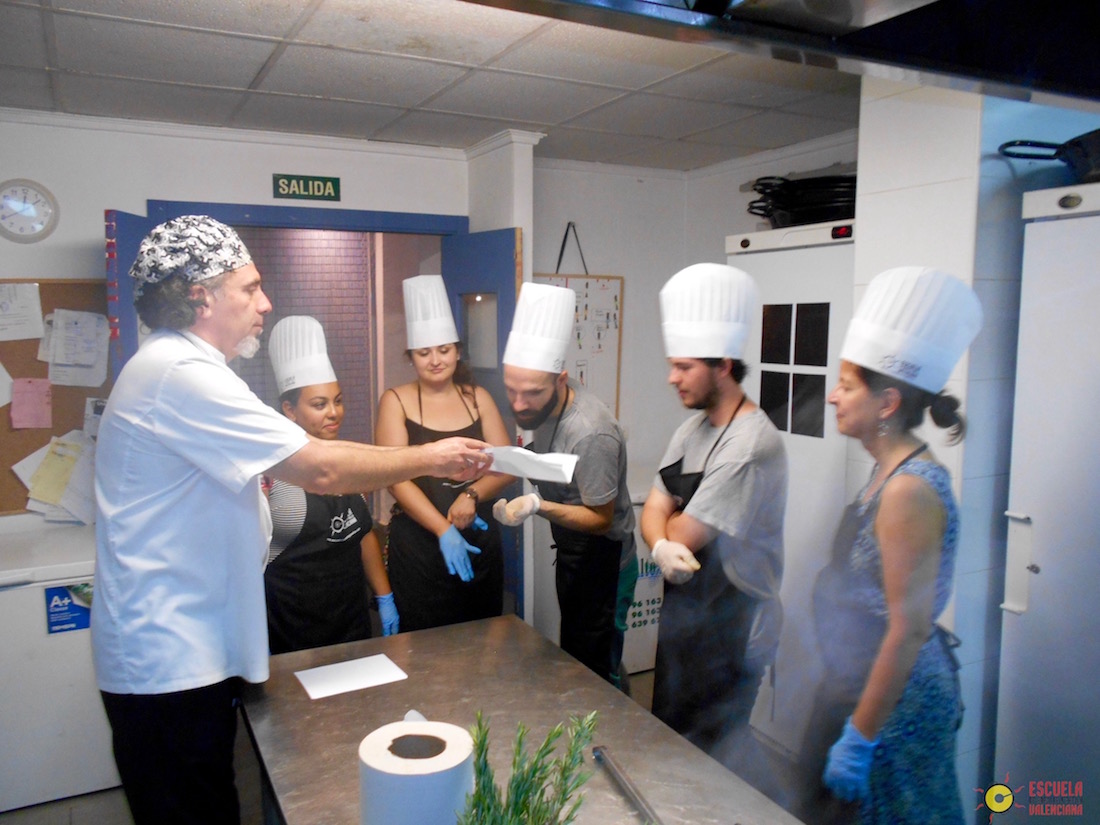
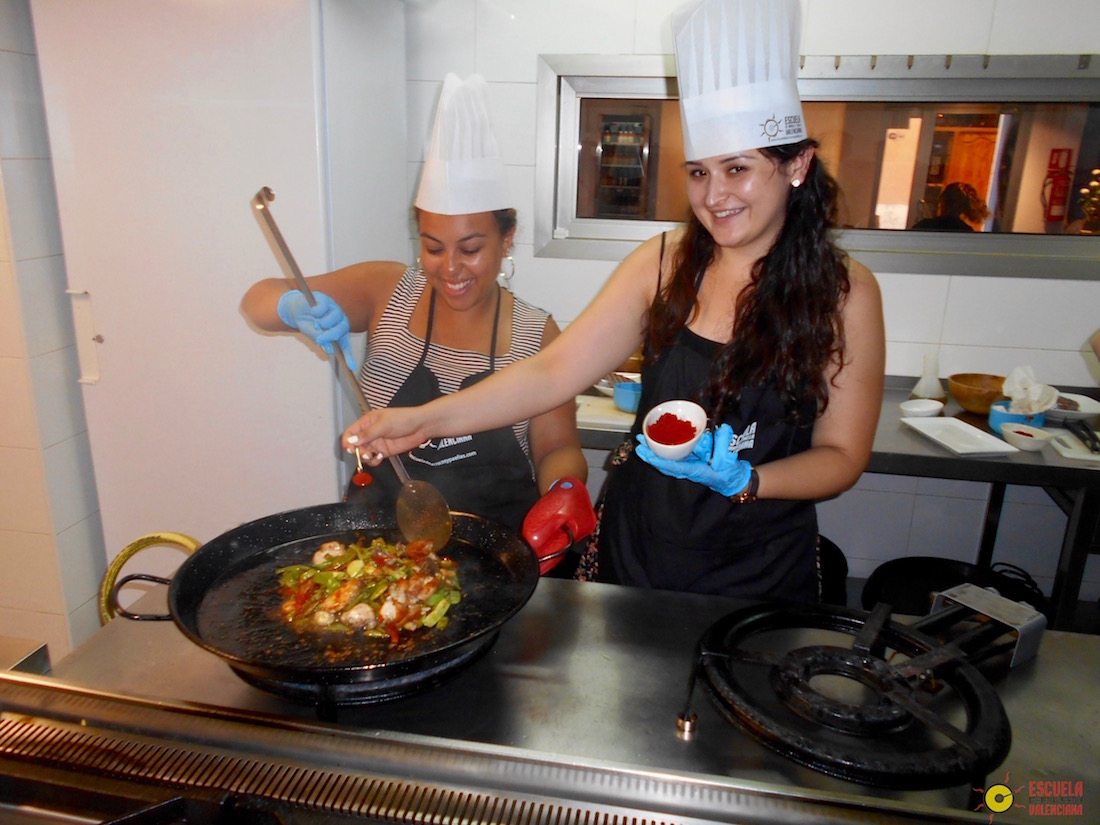


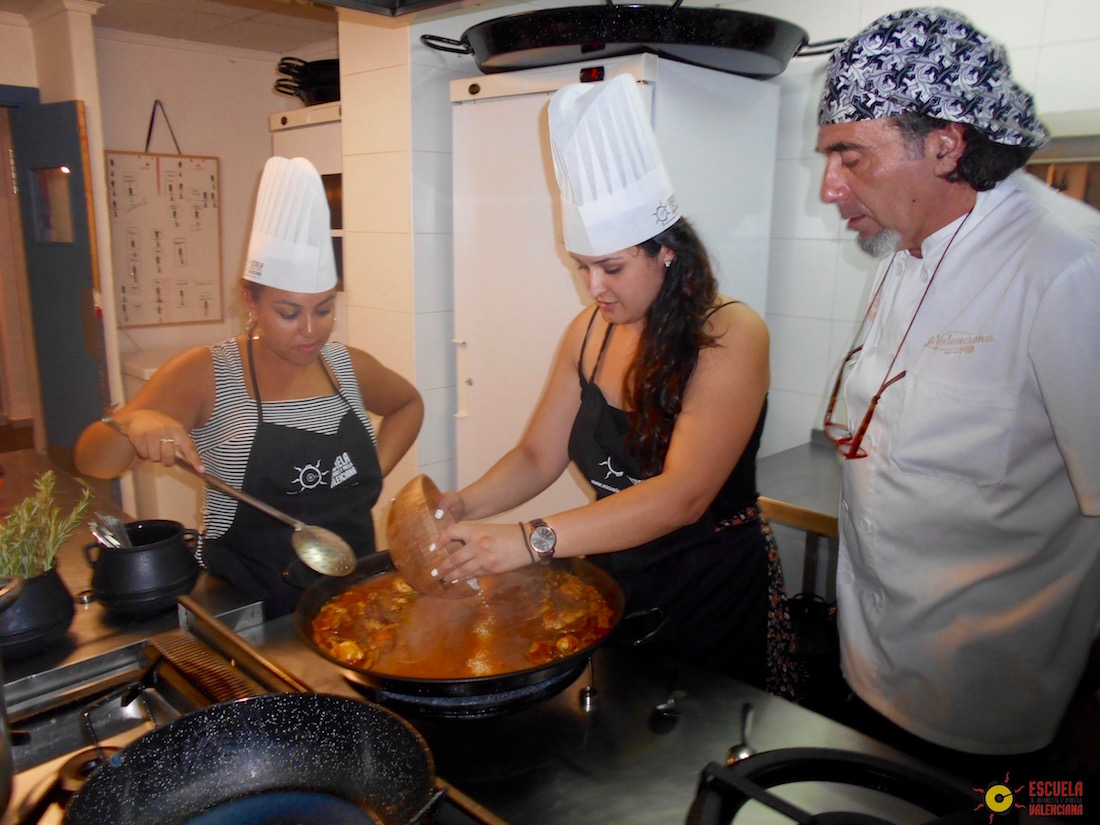







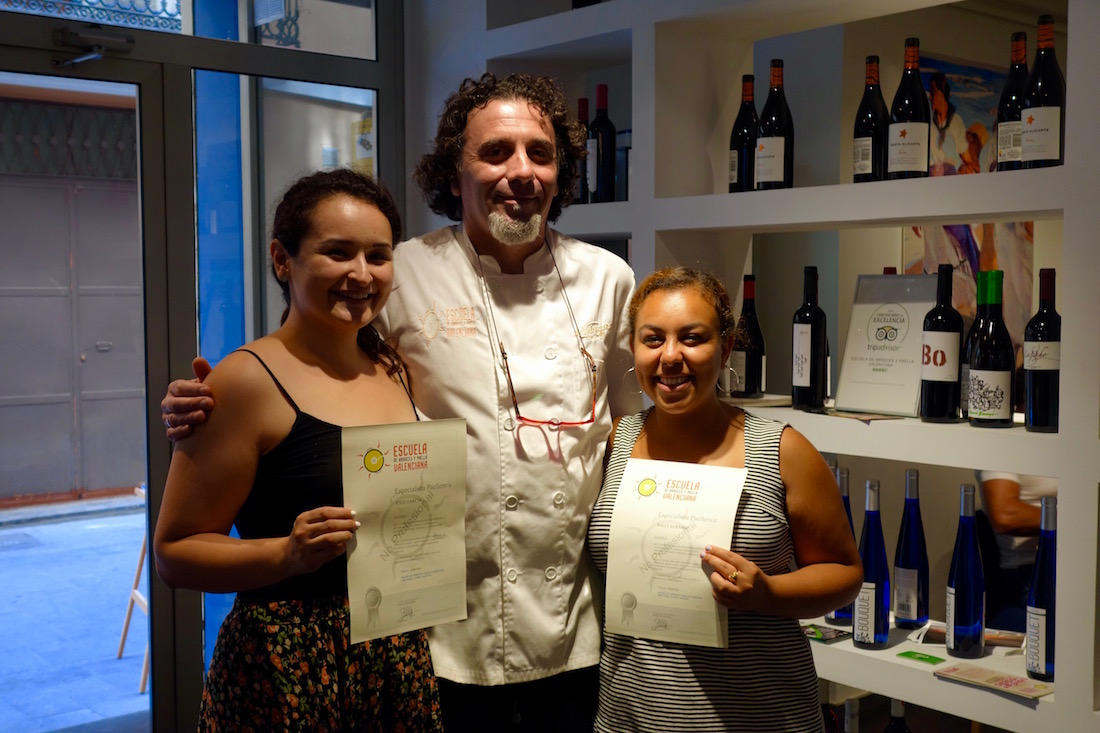


Paella is my favorite dish in Spain but I prefer the seafood. We are staying in Valencia in the summer to attend the La Tomatina festival and cooking class like this would be something cool for us to do.
Agreed! The seafood one is SO much better.
That’s AWESOME! I’m so jealous you’re doing La Tomatina. I missed it by one day :(. Will definitely have to go back again one day. Highly recommend this cooking class though – it’s so much fun and very informative!
This looks really delicious. I love the concept of taking a cooking class when traveling — it’s a great way to get involved in the cuisine and culture 🙂
Totally! I’m about to do my third one next week. It’s a great way to connect two of my fave things – food and travel 🙂
I love cookery classes but never put it into practise as I’m so impatient. I never realised how much effort went into paella
Haha understandable! Sometimes I take classes and realize that I probably won’t recreate the dish at home…but it does make me appreciative of all the effort it takes!
i don’t know much about the spanish cuisine but this looks really great. but it is insane how much time and effort this takes. i wihs i could try it now though 🙂
If you ever find yourself in Spain, I highly recommend this dish! It’s really delicious, although I personally prefer the seafood one. SO much effort indeed!
Hey, I love cooking and being part of a cookery class especially when you are travelling as you get to know the culture.
100%! One of my favorite (and the most delicious) way to learn about the culture!
I love Spanish food and especially Paella. I always try to do a cooking class in each destination I visit, it is a great way to experience the local culture and cuisine!
That’s awesome that you do that! I’ve only recently started doing it, and now I’m an addict! I agree wholeheartedly with you – it’s the most delicious way to experience the local culture 🙂
What a fun cooking class! The fresh, local ingredients are so important to having a good dish!
it really was! And yes, I loved the market visit part – it’s cool to know exactly where the ingredients come from!
I love Paella and i am so happy to read about this. Now i am more in love with it knowing how to eat it as its best. Thanks
SO delicious! And yeah same – I appreciate it so much more now that I know more of the history and traditions around it 🙂
Such a great experience. I love learning to cook different meals. Bet it was delicious.
It was so good! And same – one of my favorite things to do while traveling!
OMG I love paella! I went to a paella class in Barcelona but that was for a seafood one, not the traditional Valencian style. If I ate paella at every meal for the rest of my life I wouldn’t be upset 😀
Oooh that’s awesome! I have to admit that I LOVE the seafood paella, even more than the traditional one. I’m with you though – the addiction is real!
Cooking Classes are so much fun and a great way to learn from the masters themselves 🙂 I am sure it tasted fantastic! Have a lovely weekend!
Miriam
www.londonktichendiaries.com
They really are and the food was so good! Thanks, you too 🙂
I love cooking classes! One of my favorite ways to get to know local cuisine. We’re visiting Valencia soon so I will be sure to check them out!
Sameeee! And I’m so jealous you’re visiting Valencia! Such a great city. Be sure to check out my other posts on Valencia too – I have everything on there from a restaurant guide to things to do :). Happy travels!